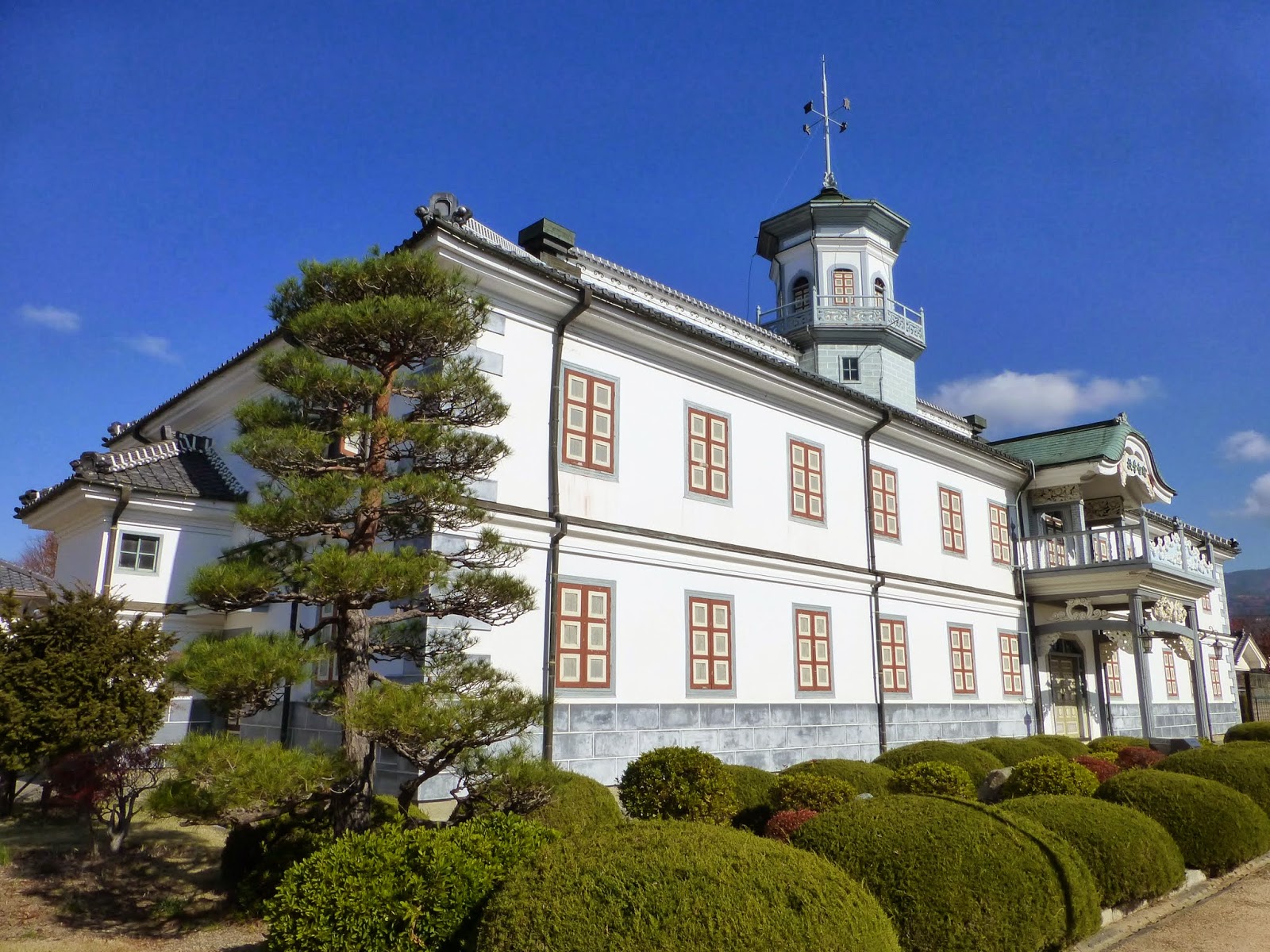Education in Japan, like most countries, existed only for the wealthy and powerful until fairly recently. In 1872, the educational system was reformed, requiring that all citizens be educated; Kaichi School was the first community school in the region.
It's a beautiful building, though it was formerly in an "L" shape; the back portion of the building was destroyed at some point.
Current school buildings are nowhere near this beautiful, being made of concrete with very little design elements. They're quite easy to identify, though, because they all look the same - at least in Tokyo - with the same large windows. This building is simply gorgeous.
After entering through the gift shop, you have access to the first floor.
Even the doors inside have beautiful decoration, and each door is different.
One of the first rooms is a fairly typical school room, with a blackboard and classroom piano.
In the photos of the building above, you might be able to see the current weather vane. This is the original, with kanji reading "North" "South" "East" and "West" - north is at the top, and the "top" of the kanji is in the middle.
Some old tiles called "devil tiles" used to scare away demons or devils.
You can't use it, but there's a nice spiral staircase near the middle of the building. Normal staircases are built at either end as well.
There are several textbooks on display.
I thought the textbooks were pretty cool, and I would love to have some copies or originals.
Here's a model of the building as it used to stand, much longer and L-shaped.
Let's go upstairs!
The rooms are beautiful. I'd love to own a building like this, though I'm sure the upkeep is extremely expensive.
Math tools. The three line symbol means 3 in Japanese ("san" or "mitsu" depending on how you're counting).
Another textbook, for a music class.
Roof tiles visible from the second floor.
Another carving in a hallway door.
There's a very large open area on the second floor that must have been used as an auditorium or for meetings, which has a stained glass window.
Behind the open space is another room with more textbooks and teaching materials.
These textbooks have more color to them, and some of them are available for sale (reproductions) in the gift shop. They aren't cheap, though.
A map of some of Japan. Tokyo is the pink area on the right page, and Nagoya is the pink city on the bay on the left page. Matsumoto is somewhere near the top of the map.
A Japanese classroom in a Japanese textbook! The hiragana in the upper-left says "hai" (yes).
I'm back around to the large open area. The desks on the floor are all different and represent different styles used over the years. I'm not sure if they're all from Kaichi School or gathered from different schools across Japan.
I'm not sure what the paper on the left says. I recognize some of the kanji symbols, and the larger text line on the right is the same as what's written on the blackboard. The blackboard says: juu ichi gatsu ni juu san nichi (doyoubi). That translates to 11 month (November) 23 day (23rd) Saturday.
It's a fancy door to nowhere! This door used to provide access to the missing portion of the building. It's in the middle of a stairwell which ends your self-guided tour of the museum, and takes you back to the gift shop. There are some nice things for sale though prices can be a little steep.
Kaichi School is 10 minutes from Matsumoto Castle straight north on foot, or about a 25 minute walk from Matsumoto Station; you can get there on the tourist loop bus from the station in about 5 minutes. Admission is worth it at only 300 yen, and school is in session (the museum is open) 8:30-17:00 (last admission is 16:30, closed Mondays).



























No comments:
Post a Comment